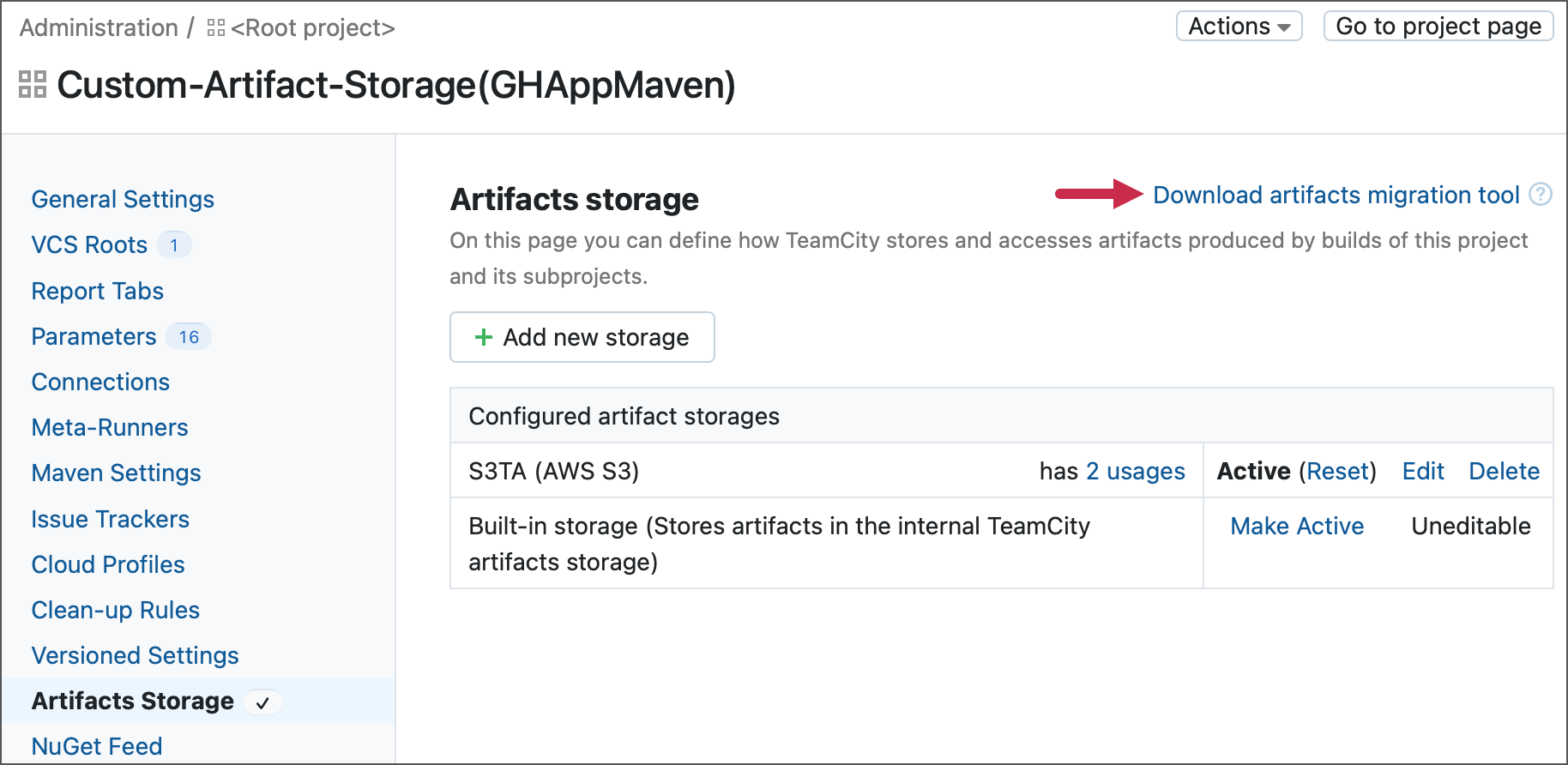Configuring Artifacts Storage
The Project Settings | Artifacts Storage tab displays artifact storages configured in this project as well as the storages inherited from parents.
By default, the built-in TeamCity artifacts storage is displayed and marked as active. You can activate a different storage using the corresponding link.
Built-in Artifacts Storage
TeamCity stores artifacts produced by builds on the file system accessible by the TeamCity server. The default artifacts directory location is <TeamCity Data Directory>/system/artifacts but it can be redefined.
External Artifacts Storage
TeamCity provides a pluggable API to enable external storage for TeamCity build artifacts. Support for different storages can be implemented as an external plugin to TeamCity: the details are provided in the external storage implementation guide.
Note that when an external storage for artifacts is enabled, the TeamCity internal artifacts (including build logs) will still be published to the TeamCity server and stored in the TeamCity Data Directory in the built-in artifacts' storage.
The same applies to the metadata about artifacts mappings, which will be published to the artifacts directory of the TeamCity Data Directory. When restoring from a backup, make sure they are restored for the external artifact plugin to work properly.
Amazon S3 Support
TeamCity can store build artifacts in an Amazon S3 bucket. Read more details in this article.
Azure Artifact Storage
Azure Artifact Storage is an experimental plugin by JetBrains which allows replacing the TeamCity built-in artifacts' storage by Azure Blob storage.
Google Cloud Artifact Storage
Google Cloud Artifact Storage is implemented as a plugin by JetBrains.
Migrating Artifacts To a Different Storage
TeamCity server ships with a command-line tool that transfers build artifacts from one storage to another. You can download this tool on the Project Settings | Artifacts Storage page.

Currently, the tool supports the following migration routes:
From a local directory to an Amazon S3 bucket and vice versa
From one Amazon S3 bucket to another
We're working on supporting other cloud storage options as well.
Learn more: Artifacts Migration Tool.